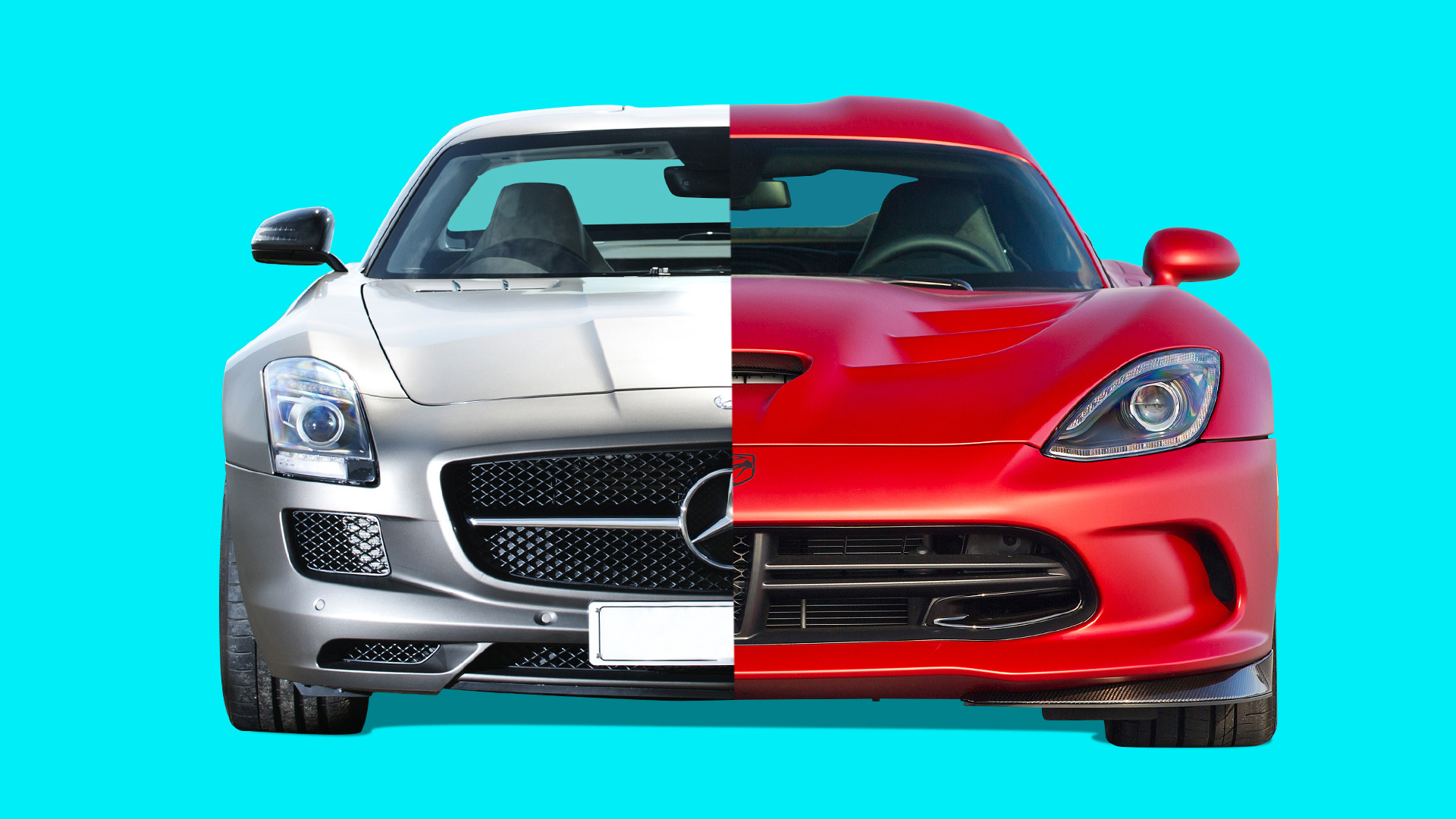Since most drivers rarely crack their hood these days, the actual building blocks of their car are a mystery on par with Stonehenge. That’s actually a wonderful thing for automakers, who know there’s only one way to survive in today’s brutally competitive industry: Build as many models as possible from the same basic platform and parts, ideally built on the same production line to save even more money.
That so-called “platform sharing” used to be a dirty word, akin to the older “badge engineering,” when General Motors tried convincing America that a Cadillac Cimarron was more than just a lemony Chevy Cavalier wrapped in Walmart leather. But Volkswagen and Audi (and Toyota, too) have led a new way, showing the world it’s possible to build mainstream and luxury cars from the same bones—and make them both great so bigshot buyers doesn’t feel gypped.
Now everyone’s doing it, some more successfully than others. Casual car fans might be surprised to see that these princes and paupers share the same genes, sometimes down to their engines, transmissions and infotainment systems. Like baby Moses in the bulrushes, the common man can actually be hiding royal blood and a stouter heart, making it the one you want to follow—while running from Ramses’ chariot as fast as you can.
Mercedes-Benz AMG SLS and SRT Viper GTS
Mercedes swore on a stack of Gutenbergs that its $220,000 AMG SLS supercar was not bastard child of the Dodge Viper. This, despite the failed shotgun marriage between Mercedes and Chrysler. Also, the two cars’ nigh-identical similar proportions, engine placement, etc. No matter: Despite 583 horsepower and a 197-mph top speed, the AMG combined beauty and brutality, with retro-flavored gullwing doors and AMG’s now-defunct, fondly remembered, 6.2-liter naturally aspirated V8. Yet for $100,000 less, the 2013 SRT Viper GTS — back after a two-year hiatus — shoved an even bigger, stronger engine under that surfboard hood, an 8.4-liter V10 with 640 perspiring horses. Nearly 400 pounds lighter than the Benz, the Viper GTS was faster in a straight line and around a track — at least in skilled hands, where it proved a surprisingly obedient and rewarding supercar.
Porsche Cayenne and Volkswagen Touareg
Porsche and Volkswagen have been a family affair from the beginning, since Ferdinand Porsche designed the “People’s” Beetle in 1934. But while the companies collaborated on the Porsche 914 and 924, the Cayenne and Touareg reach a new level of cozy. The pair of off-road-ready SUVs had somewhat dissimilar missions in 2003. The purist-baiting Porsche was a V8-powered jackhammer, the best-handling SUV yet seen; the Volkswagen was more soap-sculpted and complaisant, but it felt nearly as premium as the Porsche. What feels like pure Deutsche goodness actually traces to the Slovakian capital, where the Cayenne and Touareg (and Audi A7) roll off the assembly line in Bratislava. Here, in 2016, the latest Touareg is still a catch as the Cayenne’s kissing cousin, offering estimable luxury and performance for a reduced base fare: $42,705 vs. $59,300
Audi S3 and Volkswagen Golf R
Contrary to Barbie, math can be easy. The Audi S3 is a sweet little compact sedan that rips to 60 mph in 4.5 seconds. But it costs better than $43,000 to start, and closer to $50k in Prestige trim. Youch. For less than $36,000, you can have a Volkswagen Golf R that’s baked from the same rich, buttery pan of German strudel. Both share the same brilliant MQB modular platform, whipped-cream 2-liter turbo four, and identical choice of a six-speed dual-clutch DSG transmission. But the Volkswagen actually trumps the Audi in practicality with its hatchback layout. Take the eight grand you saved in nickels and haul it around in the Golf R’s big ol’ boot.
Lexus RX and Toyota Highlander
Lamborghini Huracán and Audi R8
Lamborghini and Bentley are making the best-performing, best-selling, most reliable cars in each band’s history. For that, thank their sugar daddy Volkswagen, which bought both struggling brands and promptly infused them with money, engineering and Audi technology. For the mid-engine Huracan and R8, the share-and-share-alike has produced two piquant supercars with similar ingredients, yet strikingly different German and Italian flavors. Lamborghini’s 602-horsepower V-10 powers the R8 V10 Plus. Both cars benefit from Audi’s all-wheel drive, dual-clutch automatic gearbox and Virtual Cockpit display. The new 2017 R8 is more engaging, a less-clinical brain surgeon than before, and it howls to 60 mph in a shocking 2.7 seconds. The Huracán remains louder, sexier and more purely exotic, as befits this South Beach gigolo by way of Italy. But check the price: The Lambo starts at $237k, while an Audi R8 V10 Plus will run you $190k.
Cadillac ATS Coupe and Chevrolet Camaro
The modern muscle car, circa 2016, is suddenly rolling up its denim sleeves to take on any and every tuxedo-clad sport sedan. For the Camaro, that transformation from a Jersey Shore punchline to a BMW punch-out begins with the sparkling Cadillac chassis and magnetic suspension that underpin the ATS. For around $38,000, the Camaro SS runs to 60 mph in 4.0 seconds—thanks to a Corvette-based V8—and performs so deftly I lost track of time like Rip Van Winkle on a run through the Adirondacks. Oh, right: The ATS-V stickers at $60,465. The $22k difference is the ultimate hack. Because V8.
